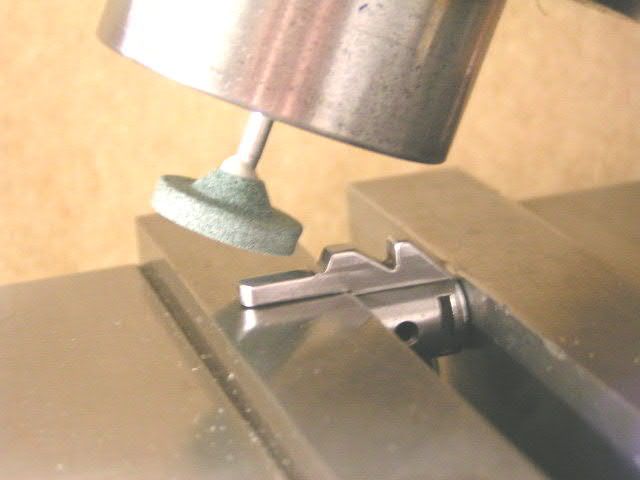Boyd Allen
Active member
I have a custom benchrest action that is very smooth on cocking, but has a noticeable hitch in its bolt closing. I believe that it happens when the cocking piece is coming out of the depression that is just past the top of the cocking cam (going in the closing direction). It seems to me that as long as I leave a small bump, between this dip, and the cam, that no harm would be done, particularly since the cocking piece continues past the dip as the bolt is fully opened. I was thinking that a cylindrical stone, chucked in a Dremel tool might do the trick, followed by some polishing with fine wet and dry and some IOSSO on a little felt wheel. Comments? Suggestions? Warnings?
Thanks,
Boyd
Thanks,
Boyd




